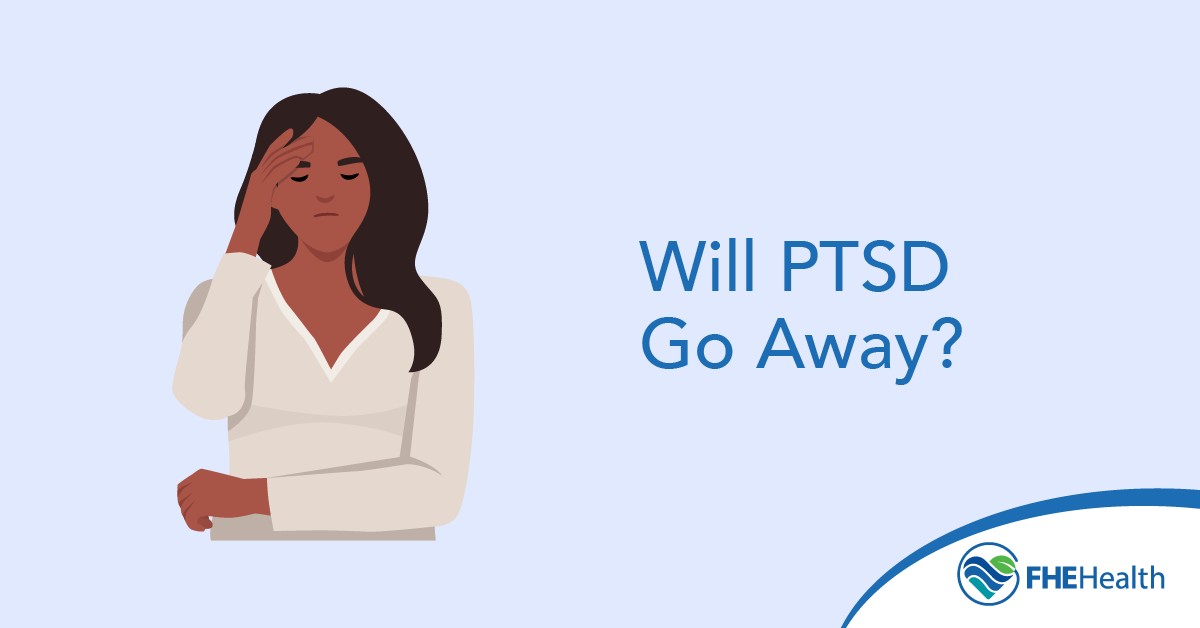
When you’ve experienced trauma, you might wonder if the symptoms will simply fade with time. The truth about post-traumatic stress disorder recovery is more complex than many people realize. While some people experience natural improvement, most with PTSD need professional support to fully heal. Understanding the signs of PTSD and knowing when to seek help can make all the difference in your journey toward wellness.
What PTSD Is and How It Affects the Brain and Body
Post-traumatic stress disorder is a mental health condition that develops after experiencing or witnessing a traumatic event. About 6 out of every 100 people will have PTSD at some point in their lives, and the condition involves far more than just difficult memories.
PTSD creates distinct biological changes in your brain. Three key brain regions are affected: the amygdala (your alarm system), the hippocampus (your memory center) and the prefrontal cortex (which controls decision-making and emotional regulation). When you have PTSD, your amygdala becomes overactive, triggering fear responses even when you’re safe, while your prefrontal cortex becomes underactive, making it harder to think rationally and calm yourself down.
These changes explain the hallmark symptoms of PTSD: intrusive memories, flashbacks, nightmares, avoiding reminders of the trauma, negative thoughts and feelings and heightened arousal, such as being easily startled or constantly on guard. Your body stays locked in fight-or-flight mode long after the danger has passed.
Can PTSD Resolve on Its Own?
The research on spontaneous PTSD recovery reveals a mixed picture. Up to 40% of people with PTSD recover within 1 year, but this means 60% continue to struggle. A comprehensive analysis found that across all studies, an average of 44% of people with PTSD at baseline were non-cases at follow-up without specific treatment, but remission rates varied widely, from 8% to 89%.
Timing matters significantly. When baseline assessment occurred within the first 5 months following trauma, the remission rate was 51.7%, compared to 36.9% when baseline was later than 5 months after trauma. This suggests that if symptoms persist beyond several months, they’re less likely to resolve on their own.
The reality is that most natural recovery happens early. The majority of recovery occurs within the first 3 months following trauma, with little change in PTSD prevalence observed beyond this point. After 6 months, the window for spontaneous improvement largely closes.
Factors That Influence Recovery
Whether you experience natural PTSD recovery depends on several critical factors. Social support plays a protective role. Feeling supported by family, friends or other people following the traumatic event can reduce the risk of developing PTSD.
The nature of your trauma also matters. Publications on PTSD related to natural disasters reported a high mean remission rate, while trauma involving interpersonal violence typically leads to more persistent symptoms. Research shows that higher trauma exposure was associated with a lower probability of spontaneous remission from PTSD.
Personal factors influence outcomes too. Those who experienced childhood trauma, interpersonal violence, severe symptoms or a secondary anxiety or affective disorder were less likely to remit from PTSD and reported longer median times to remission. Without treatment, the median time to remission was 14 years — more than a decade of unnecessary suffering.
Evidence-Based Therapies That Help PTSD Improve
The good news is that effective post-traumatic stress treatment exists and works significantly better than waiting for natural recovery. After treatment with cognitive behavioral therapy, between 53% and 63% of adults achieved remission.
Three trauma-focused therapies have the strongest evidence base. Prolonged exposure (PE), cognitive processing therapy and eye movement desensitization and reprocessing (EMDR) are recommended as the most effective treatments for PTSD.
Prolonged exposure helps you safely confront trauma-related memories and situations you’ve been avoiding. On average, 53% of those who initiate PE no longer meet diagnostic criteria for the disorder, and the rate increases to 68% among individuals who complete treatment. Long-term results are even more impressive — 83% of patients who received PE no longer met diagnostic criteria 6 years following initial treatment.
Cognitive processing therapy focuses on changing unhelpful beliefs related to the trauma. EMDR involves processing traumatic memories while engaging in bilateral stimulation like eye movements. Research shows these therapies achieve comparable results in facilitating trauma healing.
When PTSD Becomes Chronic Without Treatment
Untreated PTSD doesn’t simply stay the same. It often worsens and creates cascading problems. Untreated PTSD can last for decades, robbing you of years of quality life.
The physical toll is substantial. The constant state of anxiety and hyperarousal takes a significant toll on the body, and untreated PTSD has been linked to chronic pain, heart disease, hypertension and gastrointestinal problems.
Your relationships suffer when PTSD goes untreated. PTSD can make it difficult to trust others, and survivors may feel numb and distant from other people, leading to social withdrawal and isolation. Work performance often declines, and it’s not uncommon for untreated PTSD to result in the use of or dependence on drugs and alcohol to cope with intense feelings of anxiety and depression.
Perhaps most concerning, research has shown that people with untreated PTSD are at a higher risk for suicidal ideation and attempts. The longer PTSD goes untreated, the more entrenched it becomes and the more it impacts every area of your life.
Hope for Healing: What PTSD Recovery Can Look Like
While PTSD recovery rarely happens on its own, effective treatment offers genuine hope. Treatment works at any age and regardless of how long you’ve had symptoms. You can get treatment for PTSD even after many years.
Recovery doesn’t mean forgetting what happened or never feeling distressed again. It means learning to process the trauma so it no longer controls your daily life. You’ll develop healthy coping strategies, reconnect with activities and people you enjoy and regain a sense of safety and control.
Most importantly, you don’t have to navigate this alone. Professional treatment provides the tools and support you need to heal. Many people who complete trauma-focused therapy report symptom reduction and genuine transformation in the form of improved relationships, better physical health and renewed hope for the future.
If you’re experiencing PTSD symptoms, remember that waiting and hoping they’ll disappear on their own often leads to years of unnecessary suffering. The most powerful step you can take is reaching out for professional help.
Take the First Step Toward Healing
Don’t wait for PTSD to resolve on its own. FHE Health offers comprehensive, evidence-based treatment for post-traumatic stress disorder that can help you reclaim your life. Our experienced team specializes in trauma healing and will work with you to develop a personalized treatment plan. Contact FHE Health today to learn more about how we can support your journey to recovery.






